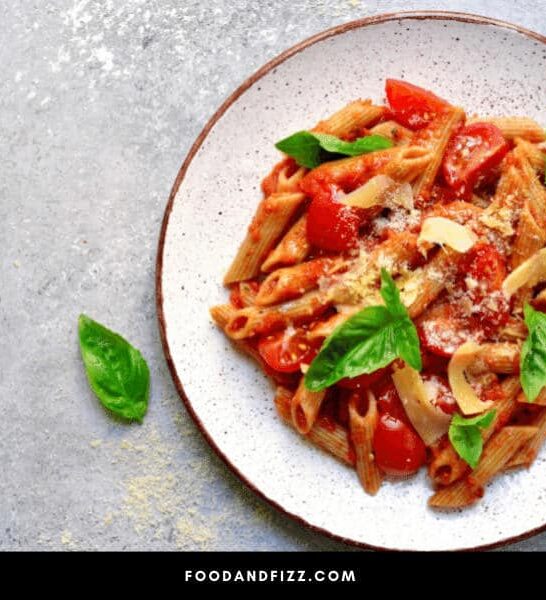I enjoy pasta dishes. They are incredibly tasty, light, and easy to make. But dried-out pasta that soaks up all the sauce and appears mushy can be such a turnoff.
I love it when it has that lustrous appearance, making my mouth water even before I taste it. Most people often wonder what the trick to preventing pasta from absorbing all the sauce is.
How to Keep Pasta From Absorbing All the Sauce?
To keep your pasta from absorbing all the sauce, you can rinse it in cold water, add salt, toss it into some oil, or use butter. The method you choose will depend on your preference and your resources.
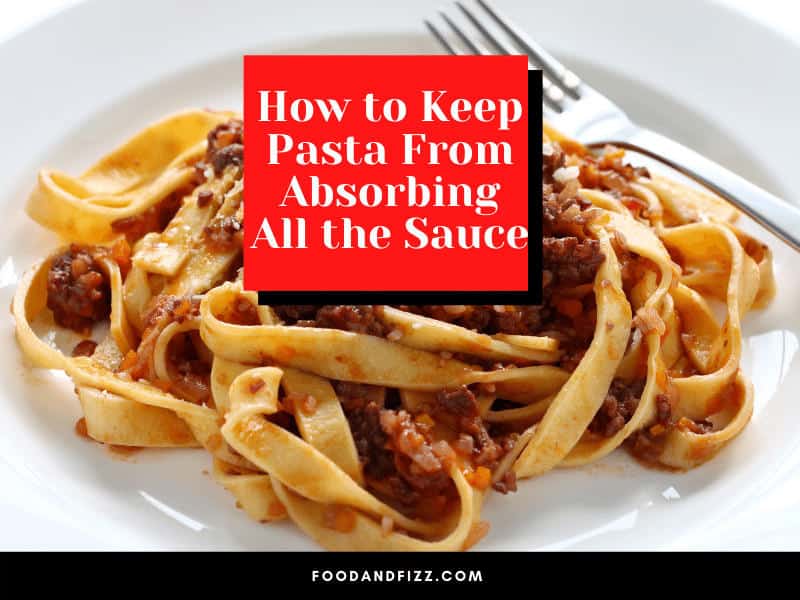
How to Stop Pasta From Soaking Up Sauce
While making pasta seems like an easy task, a lot of people struggle to ensure it does not absorb the sauce. Here are some techniques that I have found helpful.
1. Rinse Your Pasta
The first step is to rinse your pasta after boiling. Ensure that you have drained out all the water you used for boiling.
Remember to store some of that pasta water. This salty and starchy liquid will help you get a smooth, quality, and delicious sauce.
Pour some cold water over the pasta to lower its temperature so that you restrict the cooking process. Hot pasta is likely to absorb more sauce.
When you run it through water, you make it colder, which lowers the chance of your pasta absorbing a lot of sauce.
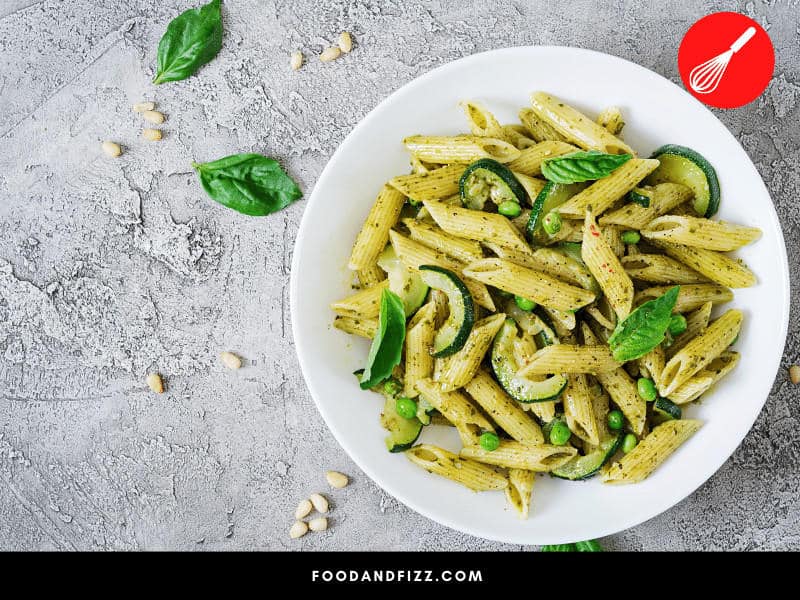
2. Toss in Some Olive Oil
After rinsing your pasta, toss it into some vegetable oil. I prefer using olive oil for the many health benefits it offers. The oil will create a protective layer over your pasta, reducing the chances of soaking up your sauce.
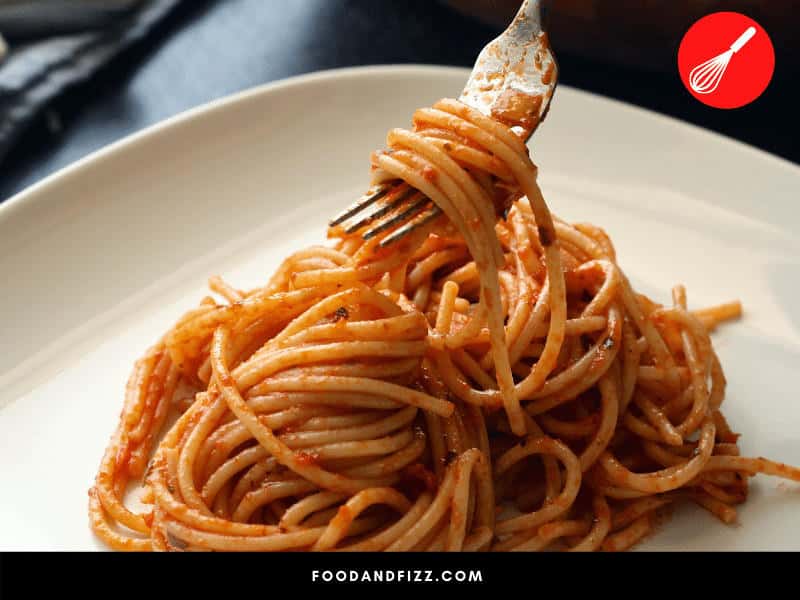
3. Use Butter
I recommend this method to anyone that is preparing mac and cheese and does not want to use oil. Adding butter creates a barrier that prevents the macaroni noodles from absorbing your sauce.

4. Keep the Sauce Thin
When cooking pasta, there is a certain consistency you are looking for. Switch off the gas before you can attain that consistency.
I ensure not to cook my sauce to the consistency I want when serving. That is because pasta is likely to absorb some sauce, and I want to leave some margin for that.
For this reason, keep the sauce thin. Use that boiling water you had set aside to make the sauce thinner. Since the water contains starch, your sauce will still have a creamy texture.

5. Add Salt
I have come across people adding oil at this stage to prevent the pasta from absorbing sauce. Instead of adding oil, I would suggest adding salt as you boil.
Boiling the pasta with some oil does not do an excellent job of stopping the pasta from soaking up all your sauce. Instead, boil your pasta with salt. Plus, you will also be adding some flavor to your pasta.
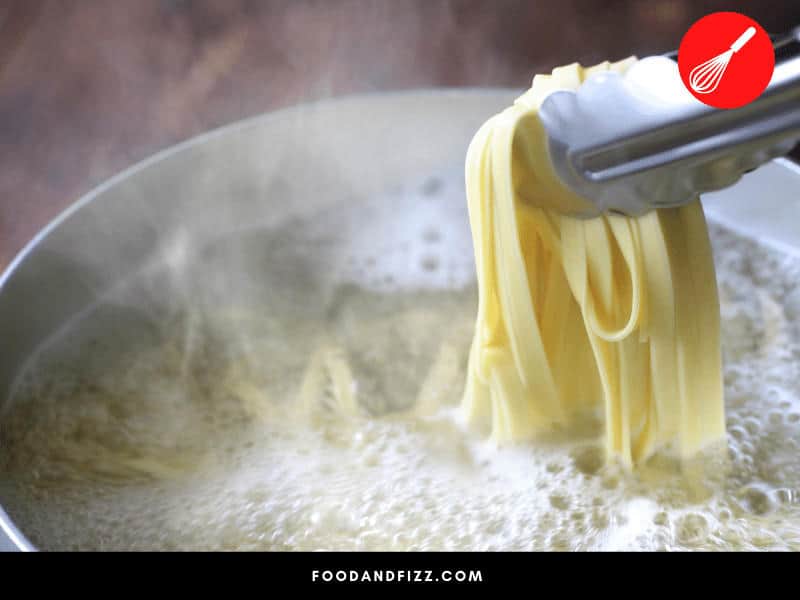
6. Stirring
As you boil the pasta, ensure you have used enough water. When I’m not sure of the amount to use, I prefer using excess water because I will drain it once the pasta is ready.
Enough water prevents the pasta from sticking together, and stirring will stop the pasta from clumping together. Clumped pasta will absorb more sauce than pasta that has been stirred up well.
You do not have to stir continuously. Stir in the beginning, as the pasta cooks, and once you are done.

7. Add Herbs and Cheese Later
Earlier on, I mentioned switching off the stove while the sauce is thin. Once you have done that, you can add your grated cheese to the sauce to give it a creamy texture. The residual heat will melt your cheese and allow your sauce to thicken.
You can then finish off with your desired herb. My go-to herbs are dried oregano, bay leaves, and fresh basil. It is all about the flavor you are looking for.
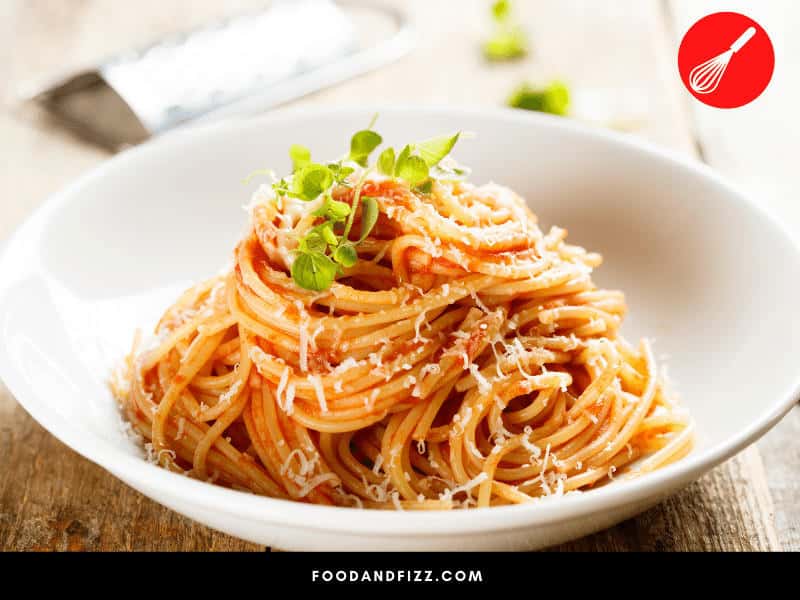
8. Serving Matters
The plates you serve your pasta on matter too. Cold dishes cool the dish quickly and cause the pasta to absorb the sauce.
Warm your plates before serving. I usually place mine closer to the stove when I’m almost done cooking. This gets my plates just the right kind of warmth.
The pasta gets well served, and you can enjoy all the flavors while it is still hot. Most importantly, the pasta will not absorb all the sauce.
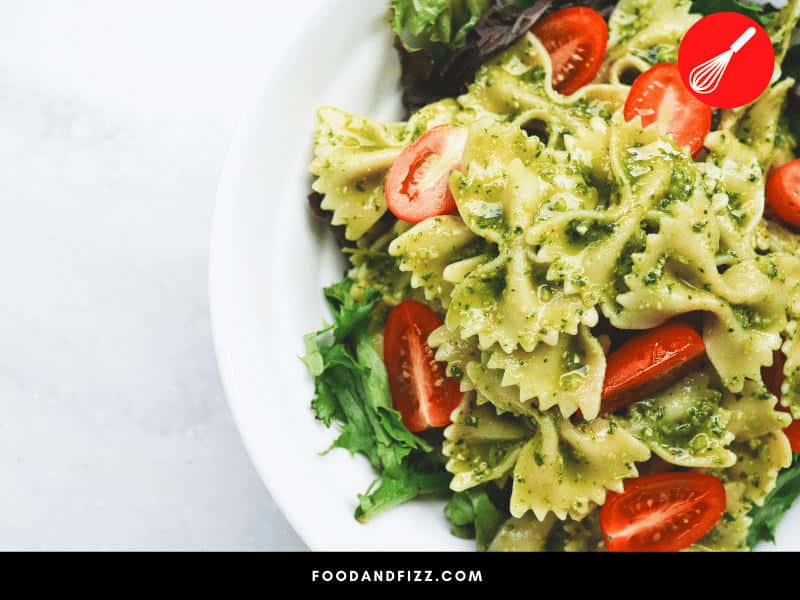
Which Type of Pasta Absorbs The Most Sauce?
Rigate pasta captures more sauce than other types of pasta. Here is my suggestion for making sauce, depending on the type of pasta you are making.
- Ribbons: Flat and wide pasta such as pappardelle goes well with creamy sauce. As a general rule, the wider the noodle is, the heavier the sauce should be.
- Tubes: Pasta like ziti and penne go well with a thick sauce such as ragu.
- Shapes: When cooking short pasta with many crevices that can trap sauce, I recommend serving it with chunky vegetable sauce.
- Rods: Long pasta like spaghetti goes well with tomato and olive oil-based sauces. The sauce coats all strands evenly. For delicate preparations, always keep the sauce thinner.
Does Hot Pasta Absorb More Sauce?
Yes, it does. That is why I suggest running your pasta under cold water if you do not want it to absorb all the sauce while you serve.
However, when you are running your pasta through cold water, do not cool it too much. You want to leave some room for the pasta to absorb some of that rich flavor from the sauce. Therefore, find a balance.
In fact, I would suggest making the sauce first before preparing the pasta. Even if I’m making a simple garlic butter sauce, I will still make the sauce first.
This ensures that the pasta is still warm by the time I mix it with the sauce. Or better yet, prepare your sauce as your pasta boils.
How Do You Prevent Stored Sauced Pasta From Absorbing Too Much Sauce?
Obviously, when any food with soup or sauce is refrigerated, it will clump up. However, if you follow the directions mentioned above, your pasta dish should be fine after you warm it up.
I would also recommend that you eat stored sauced pasta within one or two days. This stops the pasta from absorbing too much sauce.
How Do You Keep Pasta Sauce Creamy?
Dairy and cheese will make your sauce creamy. I also prefer adding some butter to enhance the richness of the sauce.
You do not need to add a lot. Add them as you finish and stir well to ensure all the flavors are well incorporated into your sauce.
Frequently Asked Questions About How to Keep Pasta From Absorbing All the Sauce
Do I need to add pasta water to the pasta sauce?
You can choose to dilute your sauce with plain water. However, I prefer using pasta water as it is starchy and salty. Not only does it add some flavor, but it also ensures your soup is not too thin.
How do you prevent pasta sauce from drying out?
If your pasta sauce looks and tastes dry, add starchy water a little at a time until you notice that the sauce is as creamy and silky as you like. If the pasta water has enough seasoning, it will enhance the sauce instead of diluting it.
Conclusion On How to Keep Pasta From Absorbing All the Sauce
What makes pasta even more delightful is the sauce served with it. But when the pasta absorbs all the sauce, you will not enjoy your pasta dish as much. The suggested methods can help reduce the chance of pasta soaking up all your sauce, allowing you to enjoy your meal.

